Forme culturali del cristianesimo nascente
(Le scienze umane) [Libro in brossura]
EAN 9788837220846
Esaurito
CHI HA ACQUISTATO QUESTO PRODOTTO HA SCELTO ANCHE
DETTAGLI DI «Forme culturali del cristianesimo nascente»
Tipo
Libro
Titolo
Forme culturali del cristianesimo nascente
Autori
Destro Adriana, Pesce Mauro
Editore
Morcelliana Edizioni
EAN
9788837220846
Pagine
208
Data
gennaio 2006
Collana
Le scienze umane
COMMENTI DEI LETTORI A «Forme culturali del cristianesimo nascente»
LIBRI AFFINI A «Forme culturali del cristianesimo nascente»
-
20,00 €→ 19,00 € -
-
-
-
-
-
ALTRI LIBRI DI «Destro Adriana, Pesce Mauro»
-
7,90 €→ 7,50 € -
18,00 €→ 17,10 €
LIBRI AFFINI DISPONIBILI USATI
-
-
-
10,00 €→ 2,00 € -
-
-
TAGS DI «Forme culturali del cristianesimo nascente»
REPARTI IN CUI È CONTENUTO «Forme culturali del cristianesimo nascente»











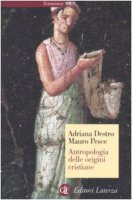
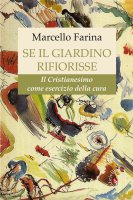
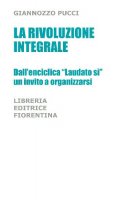
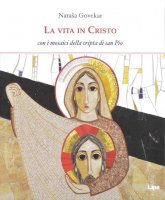
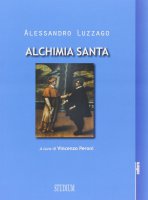
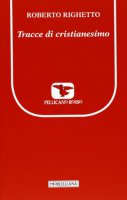

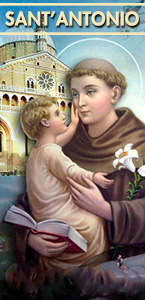

























Qui trovi riportati i commenti degli utenti di LibreriadelSanto.it, con il nome dell'utente e il voto (espresso da 1 a 5 stelline) che ha dato al prodotto.
I commenti compaiono ordinati per data di inserimento dal meno recente (in alto) al più recente (in basso).
Maria Piacentino il 29 marzo 2008 alle 13:48 ha scritto:
Adriana Destro and Mauro Pesce. Forme culturali del cristianesimo nascente. Scienze
umane, Nuova serie 2. Brescia, Morcelliana: 2005.
1. This very interesting book presents an anthropological inquiry into the origins of Christianity.
The authors examine the cultural patterns that Jesus and the earlier Christian groups adopted to
realise their religious projects and to organise their life in the world (p. 9). Destro and Pesce
focus in particular on social macrostructures, like the households, the voluntary associations and
discipleship, as well as on specific elements, for example the terminology used by Paul to define
the members of the ekklesiai. The sequence of the themes studied in the present essay is not
chronological, but thematic. It is composed of six chapters and eighteen pages of bibliography.
2. The first chapter (“La pluralità delle forme aggregative e il discepolato iniziatico giovannista”)
is centred on the model of discipleship in John’s Gospel. According to the scholars, this model
implies a complex and dynamic relationship between the leader and his followers (p. 23); it
consists of two opposite ideals (the adhesion to the teacher’s guide and the opposition to the
world, p. 39), and it is characterised by the concept of improvement (p. 34). In fact Jesus first
prepares and forms his disciples, by his acts and his teaching, and then he initiates them by
means of the final rite of “breath of the Spirit” (John 20:19-23). It is, as the authors stress, a true
process of initiation by which the disciples can live the religious experience of “rebirth”,
precisely the “rebirth from above”, in order to be able to enter the Kingdom of God (p. 47).
3. In the second chapter, entitled “Le comunità paoline di santi e fratelli”, Destro and Pesce study
Paul’s project about the communities he founded. They suggest that the way in which the
Apostle refers to the members of the ekklesiai, “saints and brothers”, is particularly revealing (p.
49). The adjective “saint”, the scholars show, specifies the concept of “brother”, because it is the
transformation of the individual, through the sacred divine power, that founds the brotherhood:
only the “saints” can be “brothers” (p. 65-66).
4. In the third chapter (“Gesù di fronte all’oikos: conflitto e ospitalità”), the authors analyse
discipleship in Luke’s Gospel, especially its relation with the household. It is, as Destro and
Pesce affirm, a dialectical relation. In fact, the itinerant followers of Jesus leave their families,
their occupations and their goods, but they have a structural relation with the oikoi, because they
need the household for their sustenance (p. 90). Like the poor, Jesus’ disciples are unable to
participate in various strategies of alliances, political protection and social integration (p. 96-97).
In this section, the discussion about the anthropological concept of household is really
noteworthy. The exposition of recent researches about Luke’s vocabulary to render the different
types of houses where Jesus and his disciples found hospitality (p. 91) is also very useful.
5. Chapters 4 and 5 are dedicated to the theme of sacrifice. In the fourth chapter (“Colpe, riti,
sacrifici”), the authors illustrate and discuss the major anthropological studies on sacrifice and its
features (V. Valeri, C. Grottanelli), as well as the sacrificial rituals in the Jewish world; they
point to the works of B. J. Malina with his conception of “life effect” and the model of the
“patron-client” relationship, and to those of M. Douglas about the norms on sacrifices in
Leviticus. In the fifth chapter (“Gesù e la remissione dei peccati”), we are faced with Jesus’
conception of sacrifice. Destro and Pesce emphasize that the central idea in Jesus’ message is the
forgiveness of sins, conceived in the tradition of the cancellation of debts as articulated in the
biblical ideal of the Jubilee. According to the scholars, what Jesus asks is a forgiveness of sins as
2
an alternative system to expiatory sacrifice (p. 132). In order to obtain the cancellation of sins by
God, there is only one condition: that the debtor, in his turn, should initiate a process of
annulment of debts (cf. the parable of the two slaves in Matt 18:23-35). It is a sort of “chain
reaction mechanism oriented to the re-establishment or to the creation of an ideal order” (p. 139).
This condition is necessary in the light of Jesus’ eschatological perspective: “the imminence of
the last judgment requires the chain reaction of reciprocal collective pardon”; those who escape
this mechanism will undergo God’s punishment (pp. 149-151).
6. The sixth and last chapter (“Conflitti e soluzioni dei conflitti nel primo cristianesimo”) focuses
on anthropological interpretations of the conflicts. Correctly, the scholars underline the
complexity of the nature of the conflicts, which are not reducible to mere contrasts. That,
however, includes a system of symbols and norms (p. 155). Destro and Pesce limit their analysis
to John’s Gospel and show that, from the beginning, this Gospel is characterized by the idea that
Jesus is constantly in danger (p. 159). On one side, the sociological presupposition of these
contrasts does not belong to the world of Jesus, but to that of the Johannine community, who
lived in strong opposition to the Jews (p. 162). On the other side, the author of this Gospel aims
to reveal the real adversary of Jesus, that is the “Prince of this world”, Satan (p. 168). The two
scholars explain why we are dealing with this stratification of readings.
7. After their Antropologia delle origini cristiane (1995, 20053) and Come nasce una religione
(2000), Adriana Destro and Mauro Pesce, Italian pioneers of the anthropological approach in the
field of the primitive Christianity, offer a new and significant contribution about the origins and
the development of the Jesus movement. So we can welcome this book that is characterised by
the harmonistic presence of two different approaches: the anthropological and the exegetical
analyses of early Christian texts. This fusion of methods produces fruitful results, because it is
not limited to the historical significance of the words and the concepts used in the texts, but it
explores more profound levels and implicit connotations familiar to ancient authors and their
readers.
Gabriella Aragione
University of Lausanne
Switzerland
© Copyright TC: A Journal of Biblical Textual Criticism, 2007.